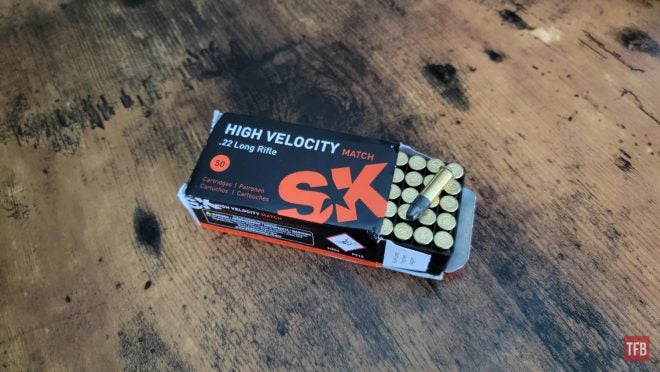Hello and welcome back to another edition of The Rimfire Report! This week we are continuing this ongoing series by going over a type of ammunition I recently discovered from SK Ammunition. The new SK High Velocity Match 22LR ammunition claims to be able to help those competing in Rimfire Precision Series or NRL22 matches to reach out to farther targets with more confidence. The precision rimfire shooters in the crowd will no doubt know the disadvantages that high-velocity rimfire ammunition has when it comes to long-distance engagements, however, today on the rimfire report I sought out to test if this more budget-friendly ammunition could compete with some of what I consider to be the best ammunition for precision rimfire that are already on the market.
More Rimfire Report @ TFB:
- The Rimfire Report: Reviewing the FN 502 Tactical Rimfire Pistol
- The Rimfire Report: Field Review of the Savage A22 Precision Rifle
- The Rimfire Report: H&K .22LR MP5 Pistol and Rifle Review
- The Rimfire Report: The Space Age Whitney Wolverine 22LR Pistol
- The Rimfire Report: The Williams/Lisk 22 Rimfire Belt-Fed Submachine Gun
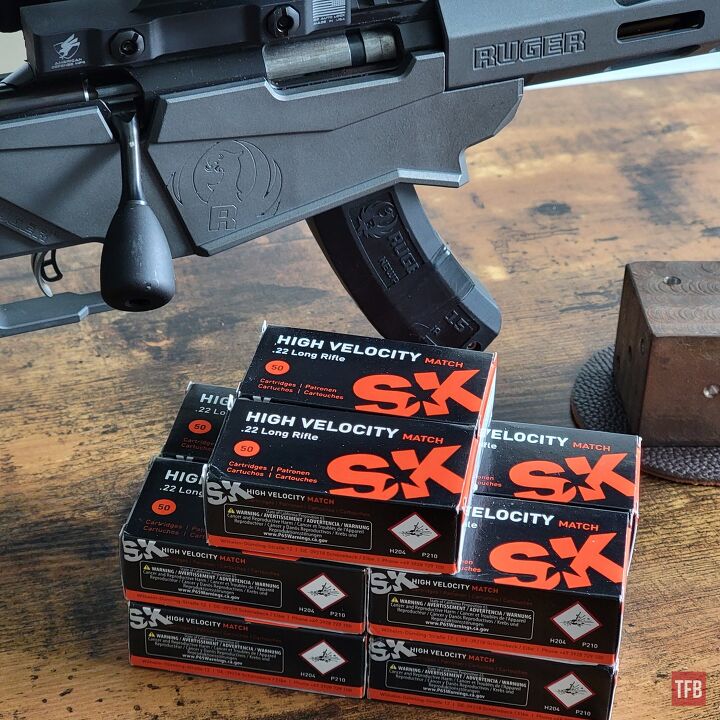
The Rimfire Report: Testing SK High Velocity 22LR Match Ammo
The idea of match grade 22LR ammunition also being subsonic is quite curious to me. Many of you will know that the main issue with supersonic or high-velocity 22LR ammunition is that it tends to interfere with its own transonic wake as it bleeds off speed which induces a reduction in the accuracy department. The general advice I’ve heard from most precision rifle shooters is that if the bullet is going to be subsonic at the target then it is often better to have the bullet be subsonic at the muzzle as well or vice versa.

The obvious advantage of having a supersonic round at the muzzle is that it will reduce the bullet drop over a given distance compared to subsonic ammo of the same grain weight. For rimfire shooters, this means that your optic will have a lot more usefulness out to greater distances but at the same time this would end up being a moot point if your high-velocity ammunition also nets you less precision and predictability.
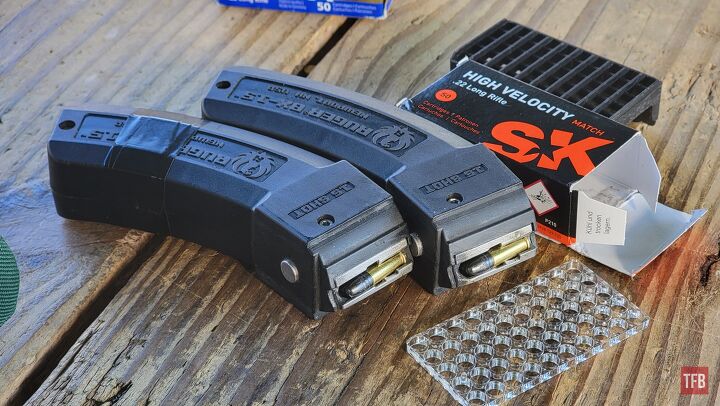
The SK High Velocity 22LR Match Ammunition has a stated velocity of 1,263 fps at the muzzle with the speed being reduced to 922 fps at a distance of 200 yards. I did not have access to a 200-yard range at the time of my testing but I was able to get some useful data at a distance of 100-yards and simultaneously compare the SK High Velocity Match Ammunition to a number of other types of ammunition to give you guys a read on whether or not this might be a good option for you at your next precision rimfire series or NRL22 match.
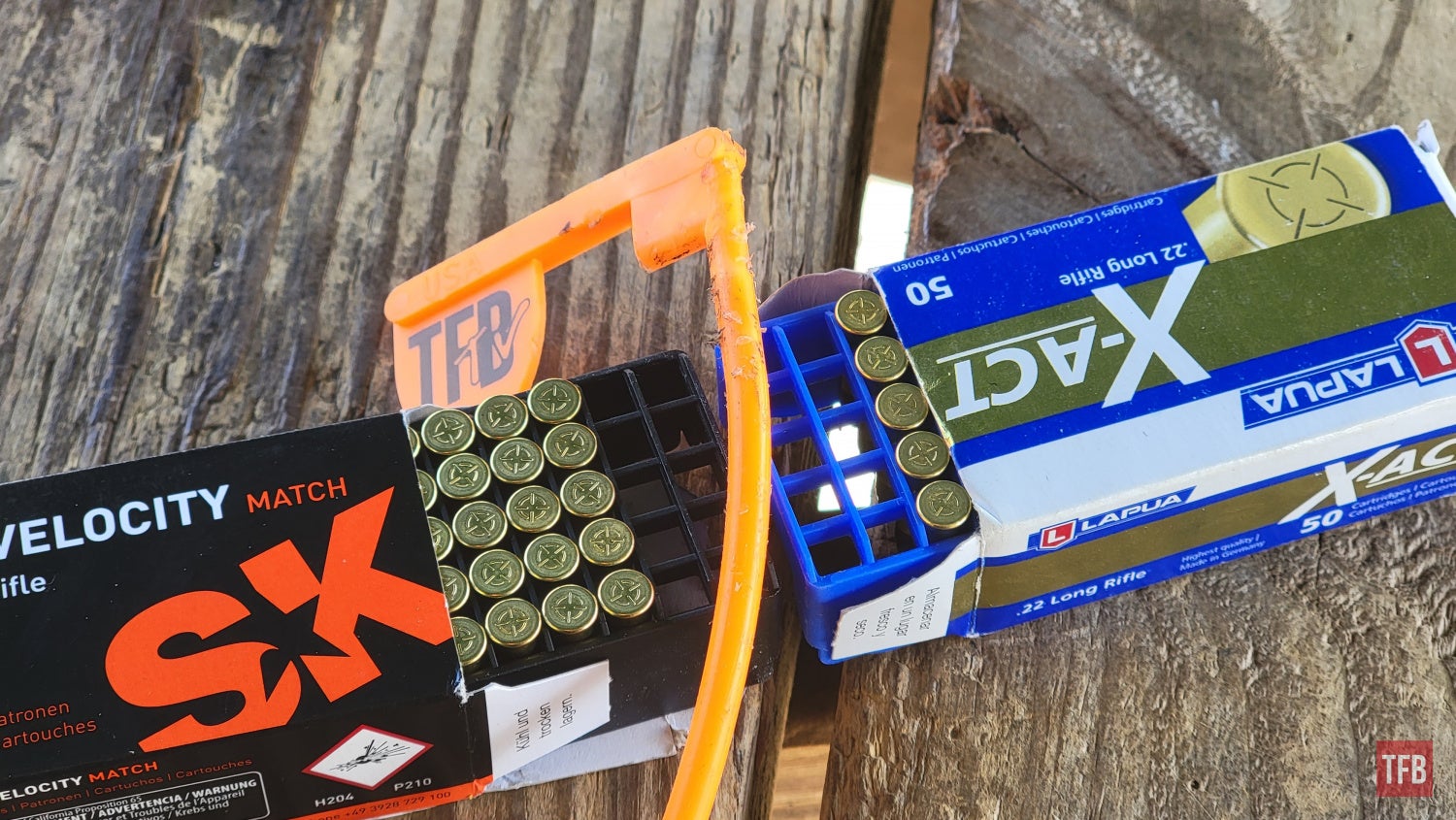
While my previous 22LR ammunition review revealed that Lapua X-ACT 22LR match grade ammunition was very good and did in fact reduce the group size out of my budget-friendly Ruger Precision Rimfire, it was just too darn expensive for it to be worth it at my level (nearly 60 cents per round). The SK High Velocity Match 22LR ammunition is much more affordable at just 15 cents per round which is about what CCI standard velocity is costing me these days. The cost is very interesting to me considering that Lapua and SK are essentially the same company and they now seem to have two products that share the same brass and are competing with one another.
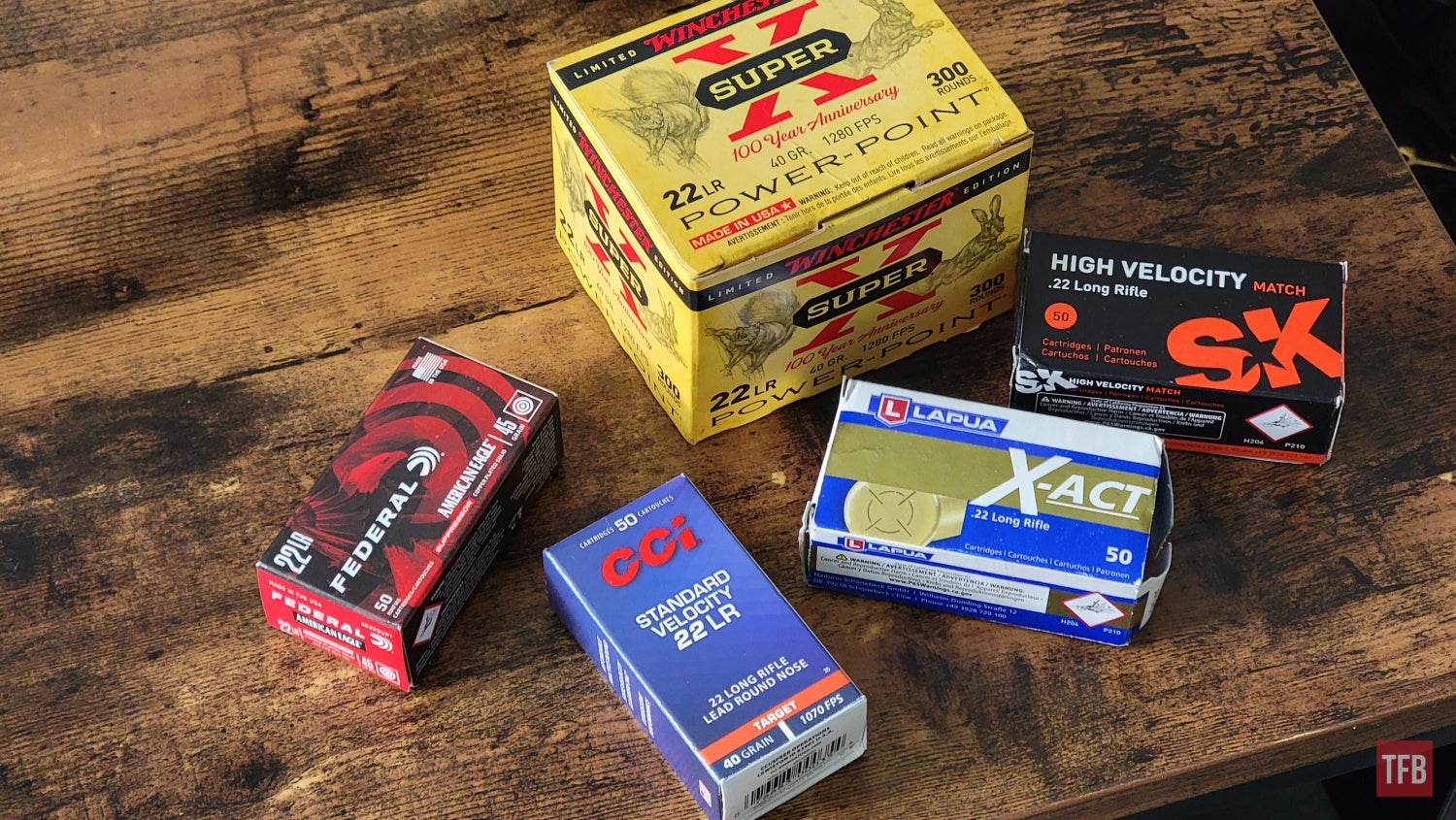
Testing Data
For my tests with the SK Match ammunition, I once again used my Ruger Precision Rimfire rifle paired with a bipod, rear shooting bag, and a Vortex Venom 5-25x56mm optic. The weather on the day I shot was calm, and about 65 F°. I ran a few velocity tests at a different range before this testing day and I was seeing some fairly consistent velocities at the muzzle. However, it is worth noting that I did have a few outstanding flyers that were subsonic at the muzzle and some that were 10-15 fps faster than the advertised 1,263 fps. On average, however, I was getting about 1,250 fps at the muzzle and I was satisfied with stated velocity claims.
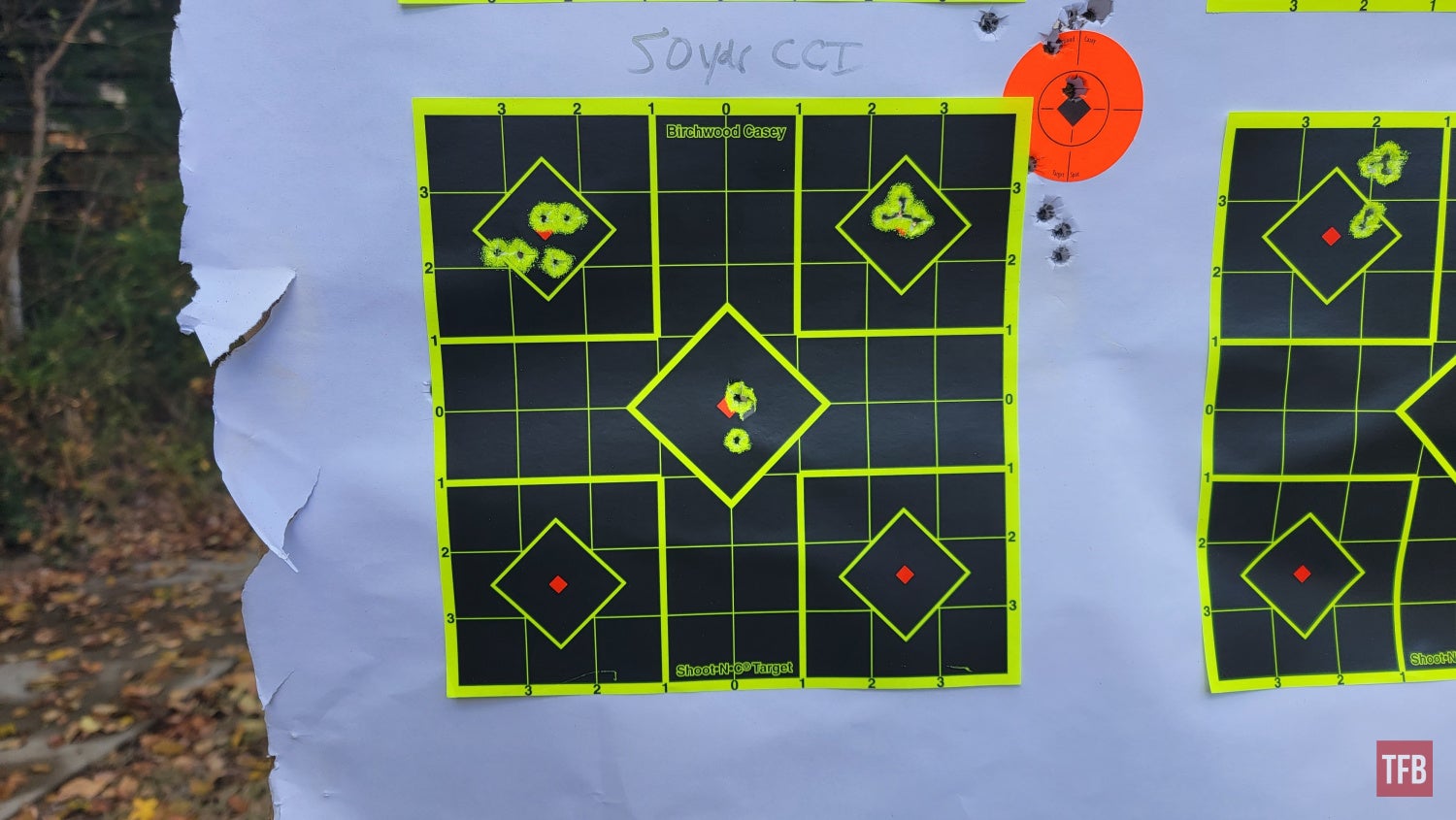
Three groups with CCI Standard at 50-yards to reconfirm my zero
My Ruger Precision Rimfire Rifle is zeroed in at 50-yards and works very well with CCI Standard Velocity 40-grain ammunition and therefore it is my benchmark for performance when it comes to ammunition out of that rifle. I went ahead and shot a few 10-shot groups with the CCI ammo before I went on to test a few other brands and saved the SK Match for last. I allowed the barrel to cool between each group and all groups were shot on the same day with the same shooter and the same rifle.
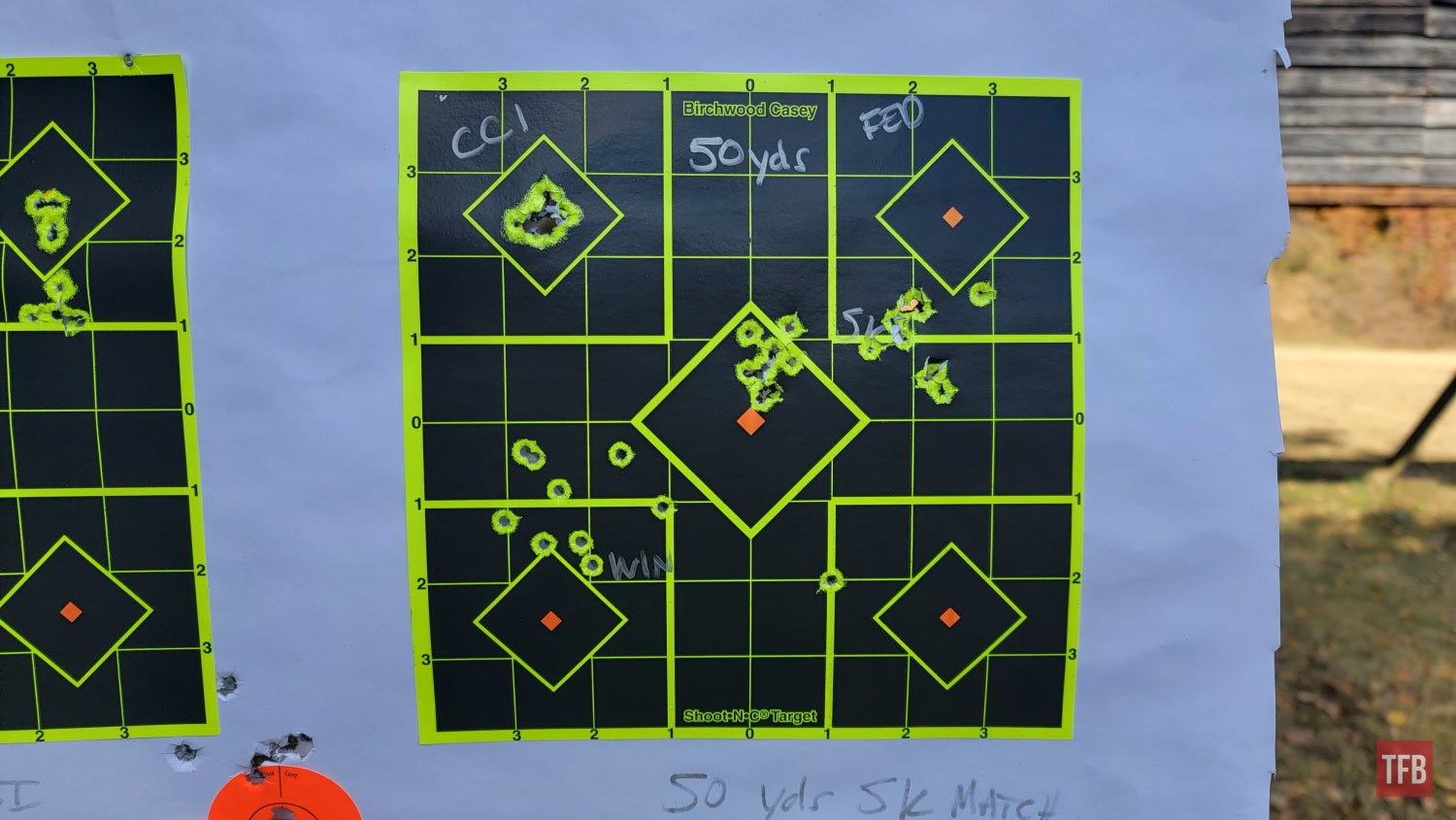
The four groups are kind of hard to make out but suffice it to say the Federal Subsonic and Winchester Super-X didn’t play well with my Ruger Precision Rimfire
Results
The CCI ammunition performed as it normally would have at 50 and 100 yards with the average being about a 1.25 to 2 MOA group. I tested out some Winchester Super-X, as well as some Federal 45-grain subsonics and I didn’t really expect either one of them to perform very well and I naturally got the results I had imagined – neither one of them were very accurate out of my rifle, even at 50-yards. The SK Match, however, seemed to do very well at the 50-yard distance with my best 5-shot group netting me 1.18 MOA.
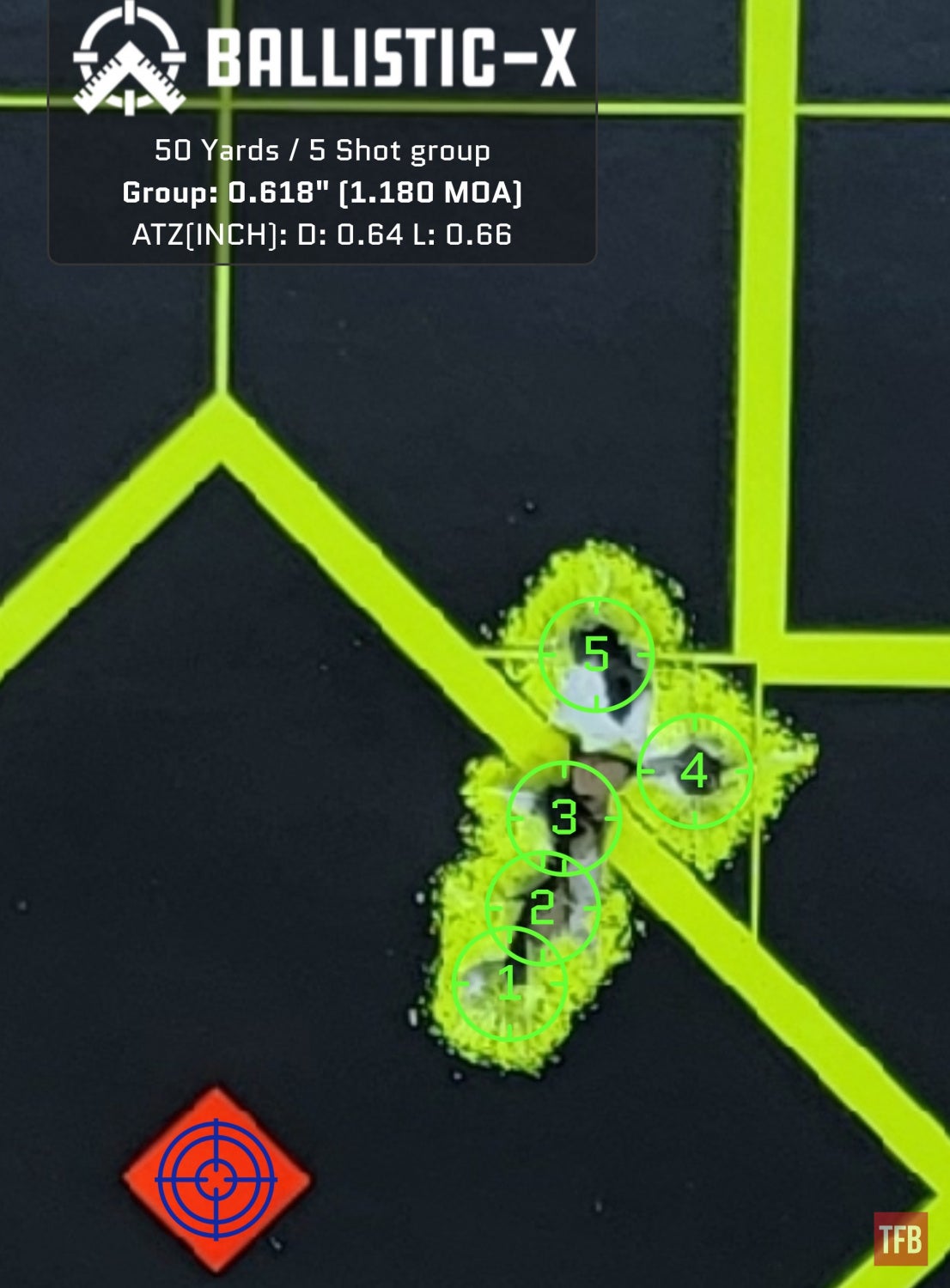
Moving on out to a distance of 100-yards, I did a string of five 5-shot groups to see how much the group would open up at that distance and under sustained fire. The best group I shot at 100-yards ended up being 1.682 MOA and this could have been much smaller given that one of them was a very distinct flyer. In fact, the round landed far outside the group sounded much different than the rest of the rounds I had fired for that string and I’m almost certain this is what caused the errant shot.
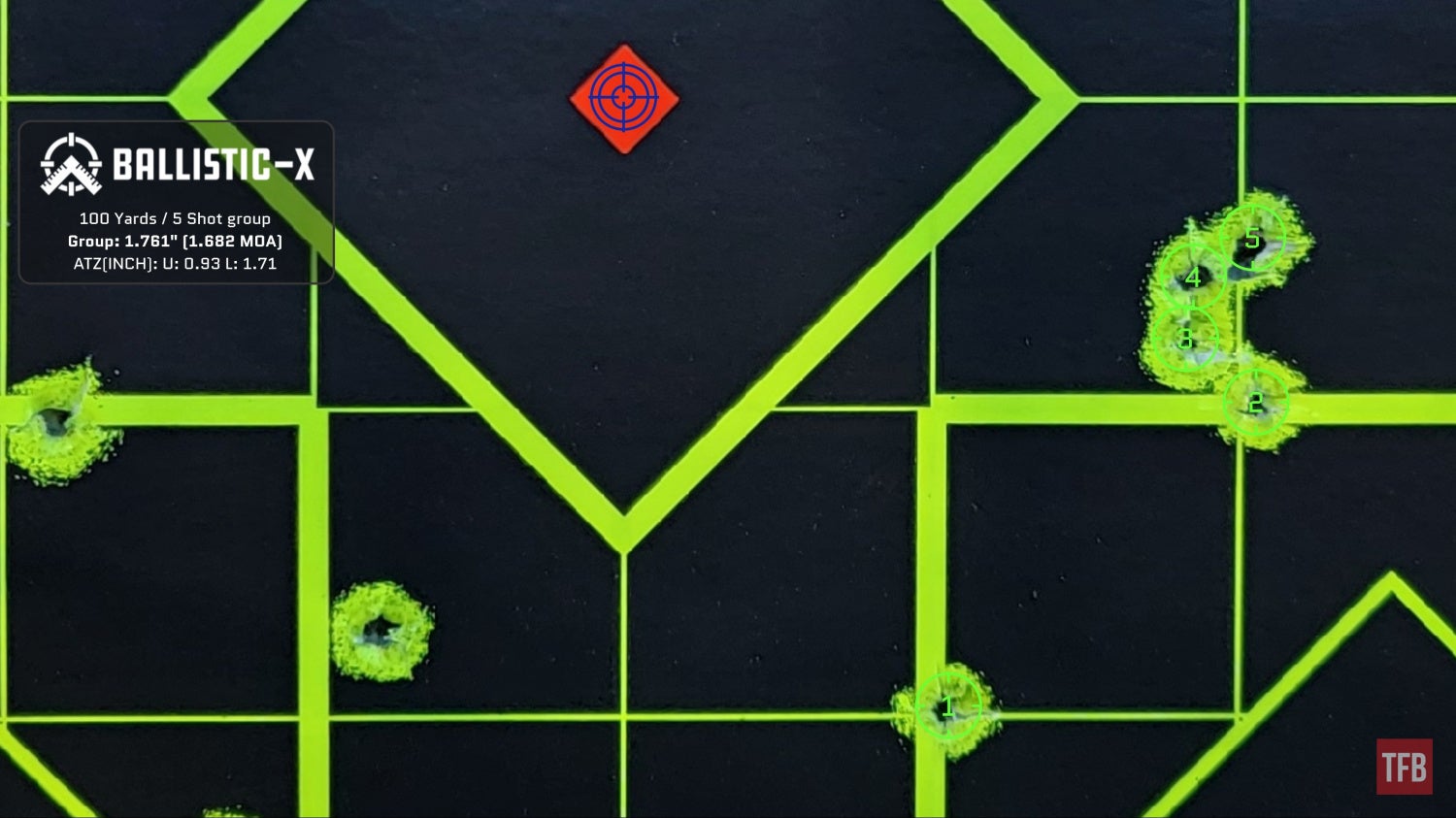
Another interesting observation I made in regards to the SK Match Ammunition is that as I went through a more or less uninterrupted 25-shot string, the group sizes tended to shrink. In the photo below I shot top left, top right, bottom left, bottom right, then center with the center one being the best group mentioned above. Pretty interesting results for high-velocity match-grade ammunition at 100-yards.
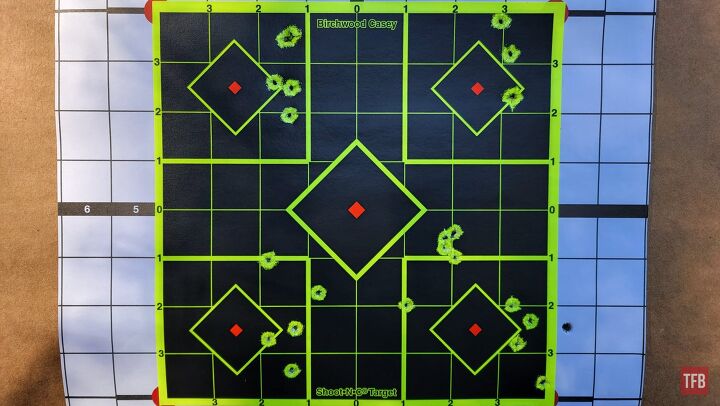
Conclusions
I have mixed feelings about this ammunition. While at ranges of 100-yards or less, the ammunition seemed to perform similarly to the CCI standard velocity with the SK Match Ammo being arguably better. However, I would be interested to see, given the chance, how both ammunitions fared at distances of 150-yards plus as the SK High-Velocity Match ammo transitions from supersonic to subsonic somewhere just past 100-yards. The fact that I had more than a handful of rounds fall well below the advertised velocity throws up a bit of a red flag for me, however, I don’t know if I’d quite trust the ammo without further testing to see if I just have bad luck.
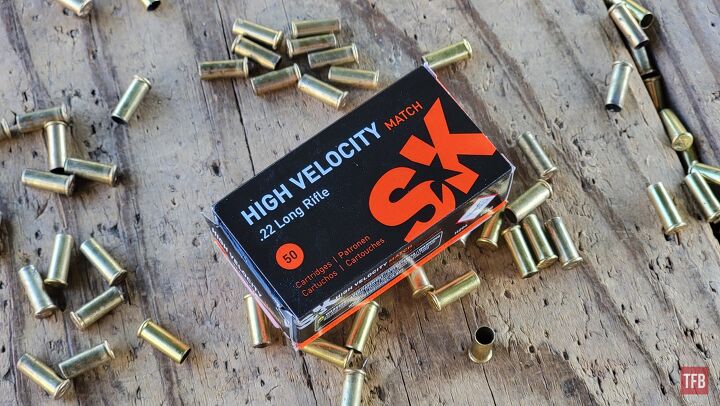
I have seen other people test out this ammunition in recent months using much better match-grade 22LR rifles and they’ve similarly seen extremely good groups (much better than mine obviously) using the ammo. Given the price point, accuracy, and reliability I’ve seen so far, I think the SK High Velocity Match ammunition is a great option. I hope to be able to get these rounds out past 100-yards sometime in the next couple of months to see how they fare in that situation. In any case, that’s all I have for you guys this week on The Rimfire Report. Thanks as always for reading TFB and feel free to let us know your thoughts, comments, and experiences with this ammunition down below.

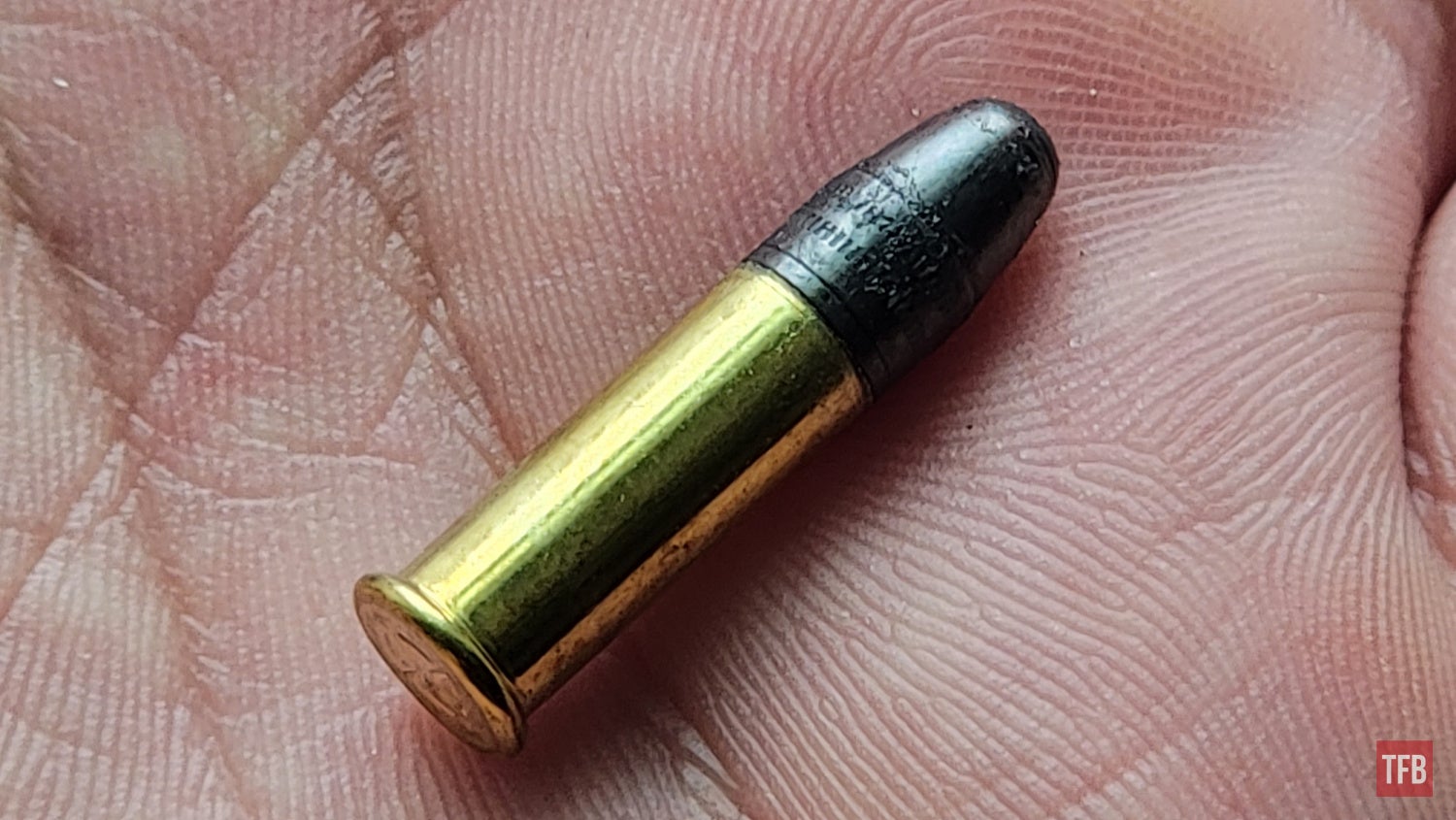

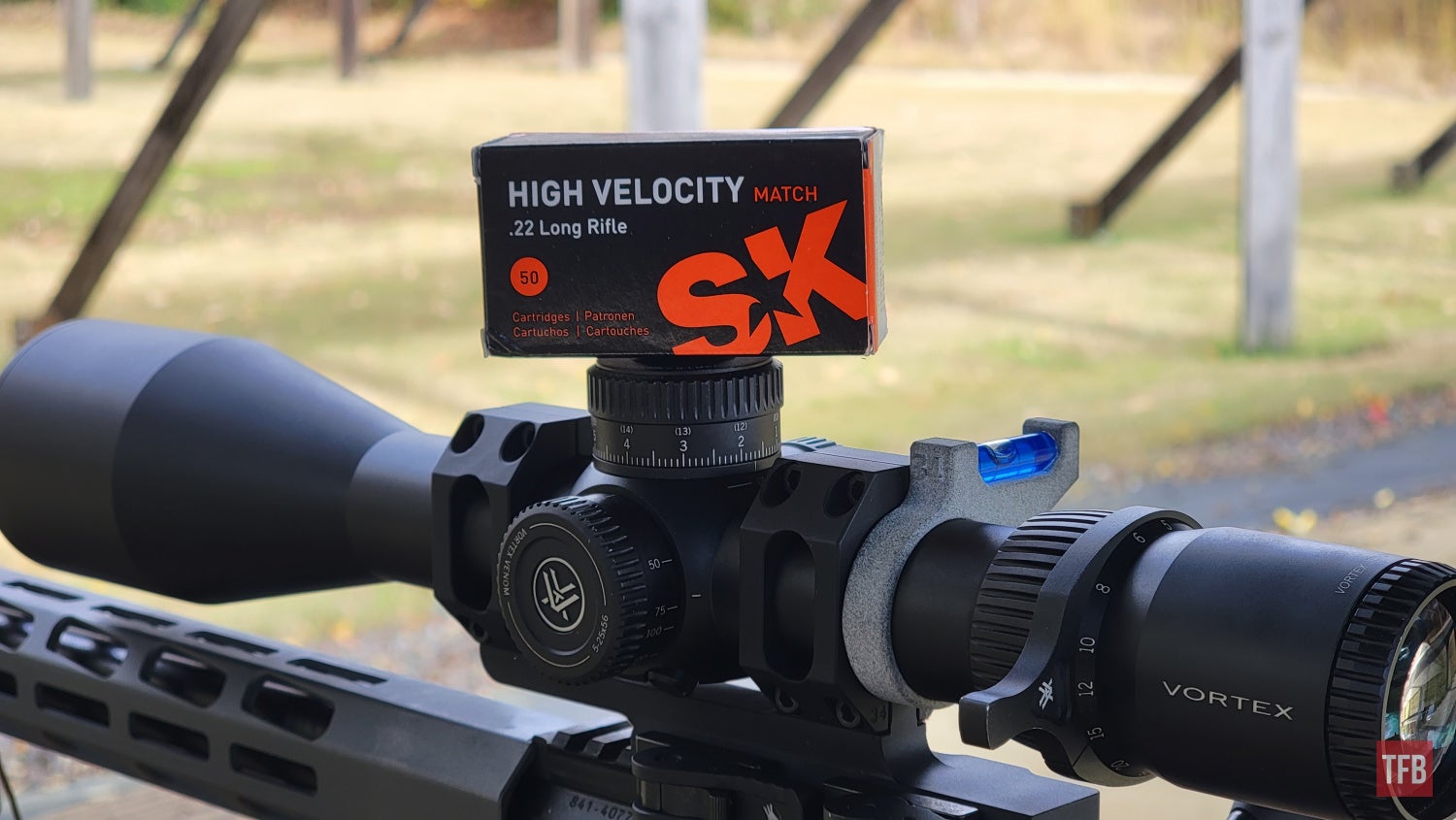
We are committed to finding, researching, and recommending the best products. We earn commissions from purchases you make using the retail links in our product reviews. Learn more about how this works.
 Your Privacy Choices
Your Privacy Choices
